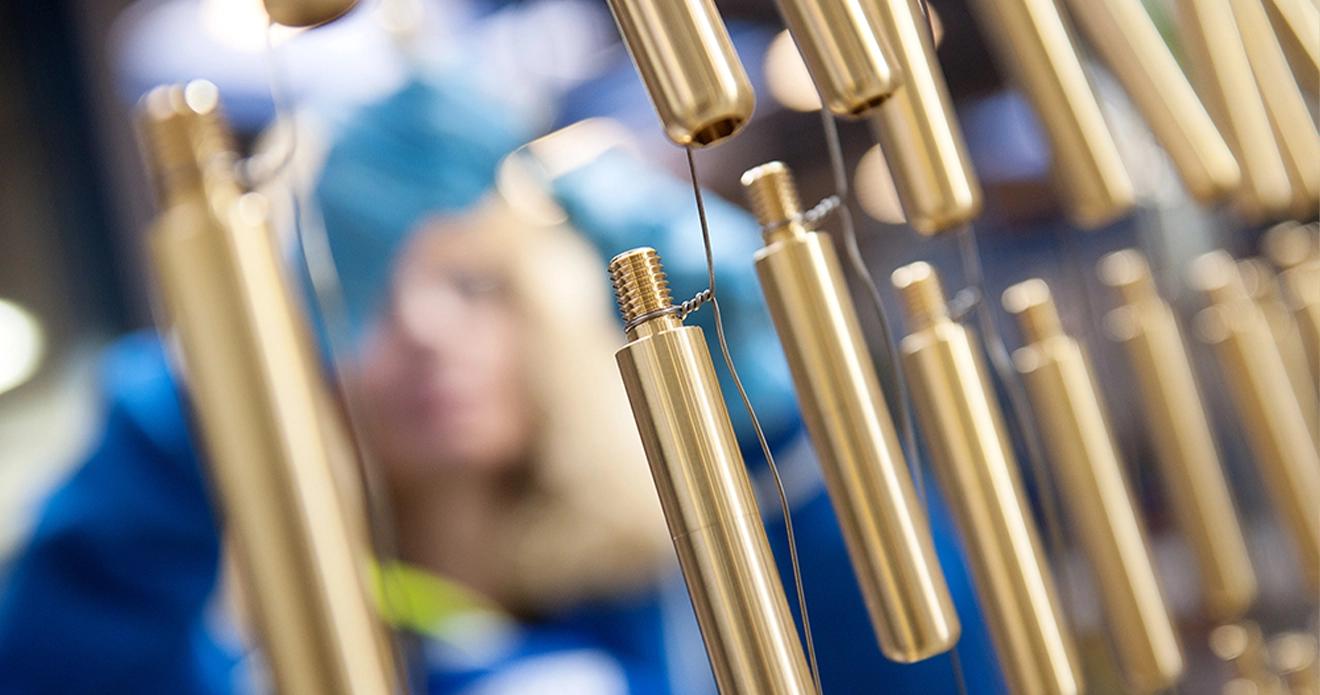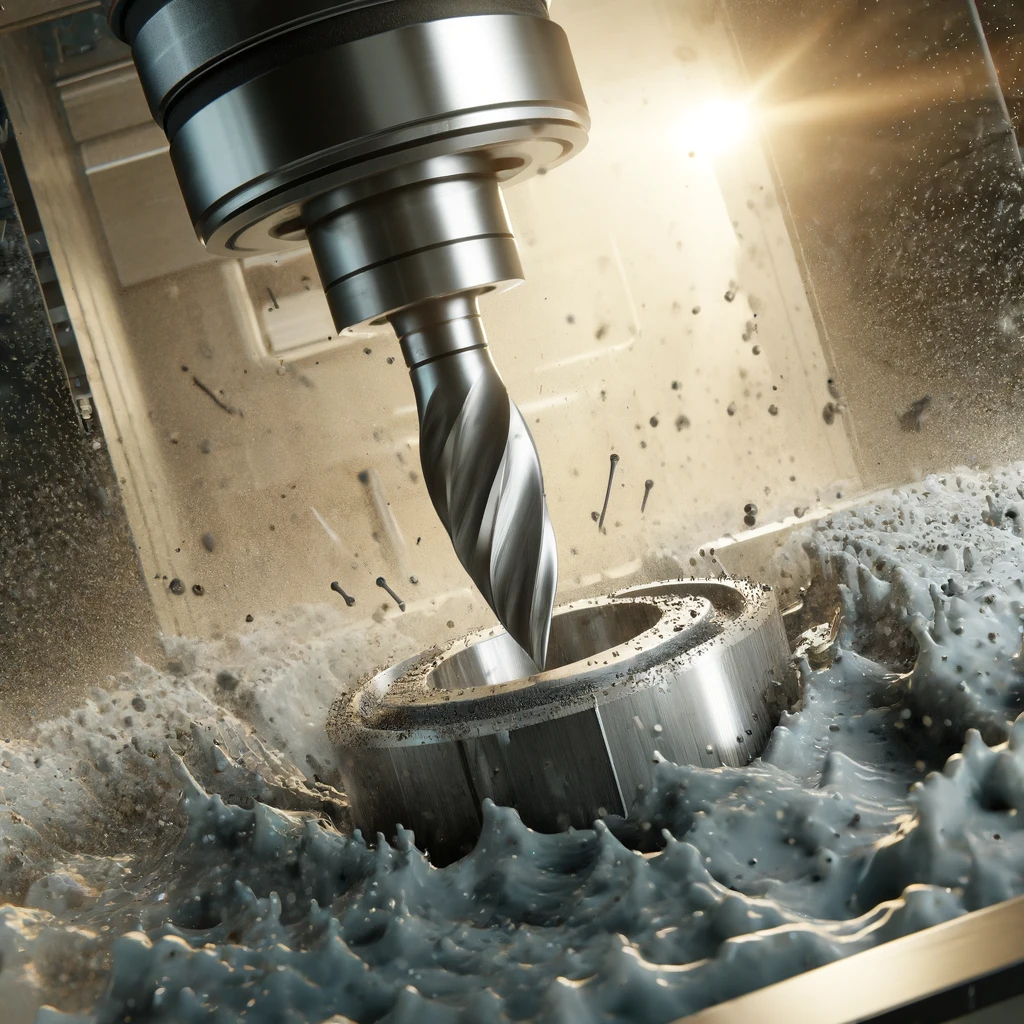High-tech surface solutions
Challenge: wear, corrosion and conductivity
The mechanical engineering industry is faced with the continuous challenge of increasing the service life and performance of machine parts, particularly in terms of wear resistance and corrosion protection, but also many other functions that are based on the properties of the surface. Wear can be caused by mechanical stress, friction and abrasion, while corrosion is caused by chemical reactions with the environment. Another important criterion is conductivity, which is particularly relevant in applications where electrical and thermal conductivity play a role.
Challenge: wear, corrosion and conductivity
Machine parts are often exposed to extreme conditions that can affect their service life and reliability. Wear leads to material loss and thus to a deterioration in the functionality of the structural elements. Corrosion, especially in humid or chemically aggressive environments, can lead to structural damage and the premature failure of components.
Our different coating solutions
Galvanising
An important group within coating technology is electroplating. This includes all processes for the electrochemical deposition of electrically conductive layers, usually metals, on a metallic substrate. Technically relevant functional coatings such as hard chrome, pearl chrome, bright chrome, nickel, nickel sulphamate, tin, silver hard anodising, anodising and combinations of these belong to this area. There is a wide range of substrates to choose from, with the key requirement being at least low electrical conductivity on the surface.
PVD/PACVD
PVD (Physical Vapour Deposition) is an advanced coating process in which ceramic hard material layers are deposited in a plasma. Vaporisation in a vacuum chamber produces thinner, uniform layers with improved hardness and wear resistance properties. One advantage is that the surfaces are free of oxides or water, which optimises adhesion and applicability in various industrial sectors. PVD is widely used from tools to decorative surfaces and is considered a key technology for customised solutions in modern industry.
Chemical layers
Chemical nickel coatings are produced from a suitable bath electrolyte without the use of electrical energy. These coatings are characterised by uniform layer thicknesses, high hardness and wear resistance. Compared to other processes, electroless nickel plating is particularly suitable for components with complex shapes, holes, cavities and undercuts. It offers outstanding wear protection. Specific pre-treatment methods can be used to coat not only steels and copper alloys, but also aluminium alloys, ceramics and glass.
Hybrid
Hybrid coatings are the synergy of different technologies, including galvanic, chemical or PVD processes. This unique combination creates a multiphase coating package with customised functional properties. These coating systems enable optimum customisation to specific requirements. The integration of galvanic processes enables precise control of the coating thickness and improved adhesion. By integrating chemical processes, special surface properties such as corrosion protection can be achieved. PVD technologies extend the spectrum to include improved resistance to abrasive influences.
An overview of our product solutions in the field of medical technology.
Insight into our customised solutions for hybrid high-tech coatings
Development of hybrid coatings with electroless nickel/PVD
The development of hybrid coatings that combine electroless nickel (EN) and physical vapour deposition (PVD), for example, offers a promising solution. An electroless nickel coating offers excellent corrosion resistance by forming a dense, passivating layer that protects the underlying metal from oxidative attack. In addition, electroless nickel has good coating adhesion to a wide variety of base materials, which enables it to be applied to a wide range of machine parts.</p
The combination with a PVD coating significantly increases the systemic wear resistance. PVD coatings, such as titanium or chromium nitride, and especially DLC (diamond-like carbon), are characterised by their extreme hardness and resistance to abrasion. These coatings also offer a very smooth and even surface, which minimises friction and therefore further reduces wear.</p
Matching the process guides to each other is particularly important in order to avoid quality issues. This is best achieved when the technologically diverse processes take place under one roof and the corresponding parameters are harmonised.
Technical and economic benefits
Technically, hybrid electroless nickel/PVD coatings offer a considerable advantage thanks to the synergy effects of the two coating processes. The excellent corrosion resistance of electroless nickel combined with the high wear resistance of the PVD coating significantly extends the service life of the machine parts. This leads to a reduction in downtime and maintenance costs, which in turn increases operating efficiency.
In many cases, heat treatment and post-processing can be omitted by using a thicker electroless nickel layer, or a more favourable base material can be used because the functions are taken over by the surface coating.
In economic terms, the initial investment costs for the coating technology are quickly amortised thanks to the extended service life and lower maintenance costs. The improved performance and reliability of the coated parts can also increase the productivity and profitability of the machines. In addition, by utilising these advanced coating technologies, companies can increase their competitiveness in the market by offering high quality and durable products.</p
Overall, hybrid coating with electroless nickel and PVD is an effective solution for improving wear resistance and corrosion resistance, offering both technical and economic benefits.
The development of such a combined, hybrid coating, which is optimised to meet specific requirements, is part of the company's core expertise and guarantees successful use for many applications.



